How I built a Sonos replacement app in 2014
Back in 2014 in my spare time I built an app to replace the default Sonos app used to control multiple speakers in a home. It was a little challenging so I thought I’d share the process. You can check out most of the code on Github.
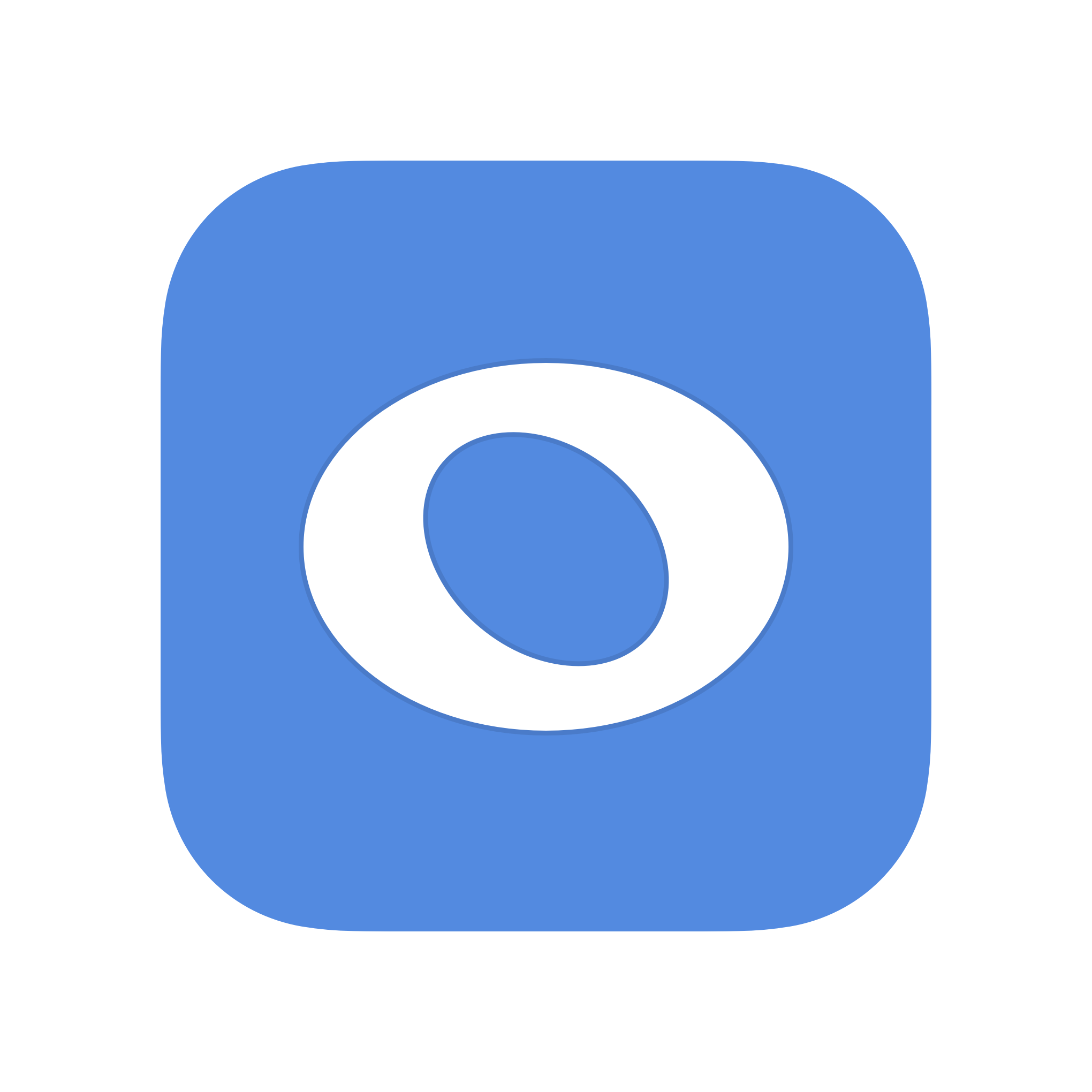
Finding the API
First off I needed to understand how the existing app was communicating with speakers on the local network. Sonos doesn’t really have an official API so I had to do some digging with Wireshark.
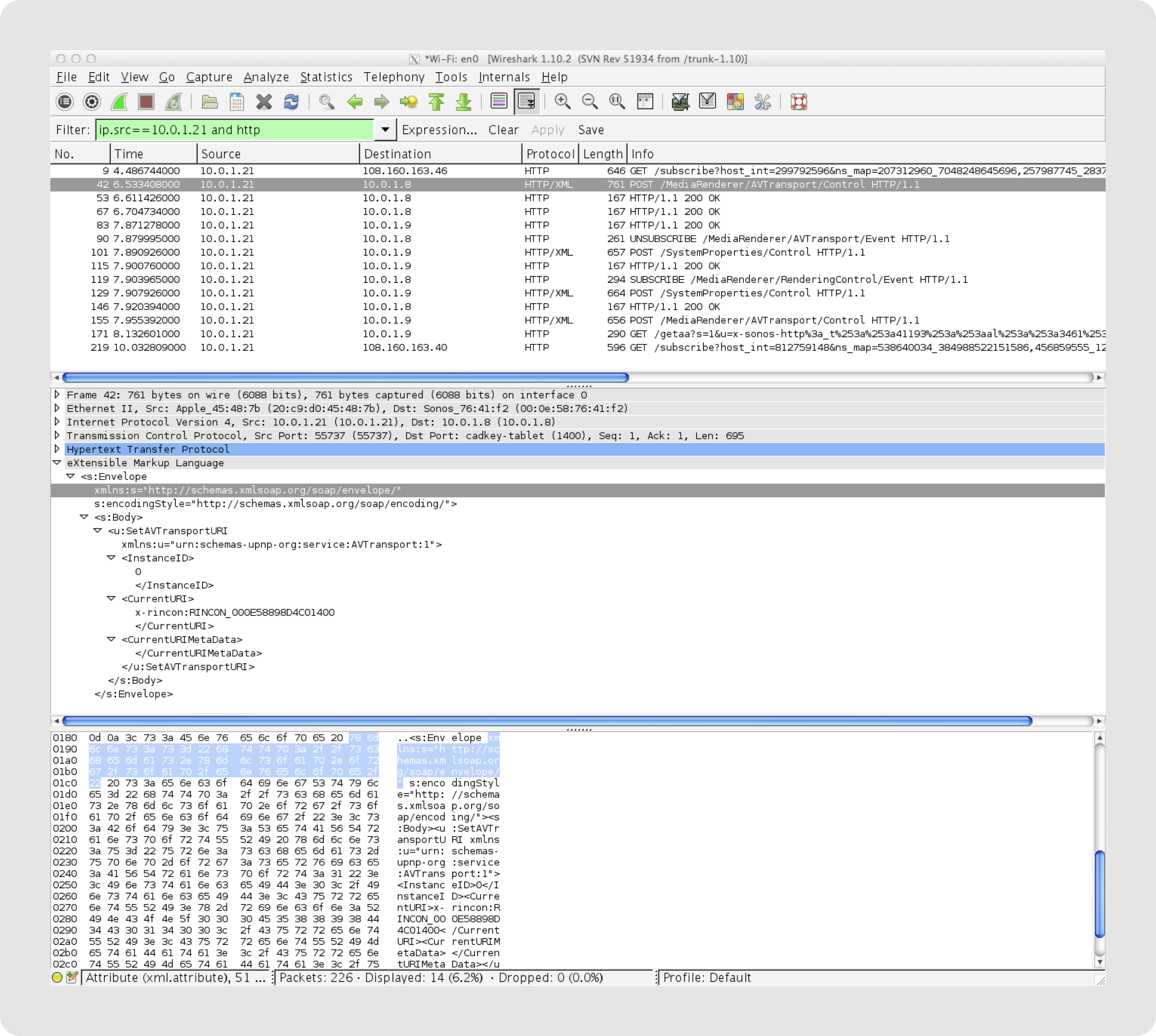
Wireshark reveals all the network traffic, which allowed me to see what requests were being passed between the speakers and the app. Sonos uses UPnP and this established a base understanding of what was needed to build a new app.
Making a better experience
What bothered me most about the current app was it didn’t give me the controls I needed quickly. Most of the time all I wanted to do was change the volume and pair speakers (I also really wanted to make my living room play out of the Line-In input quickly without any fuss). Here were a couple solutions:
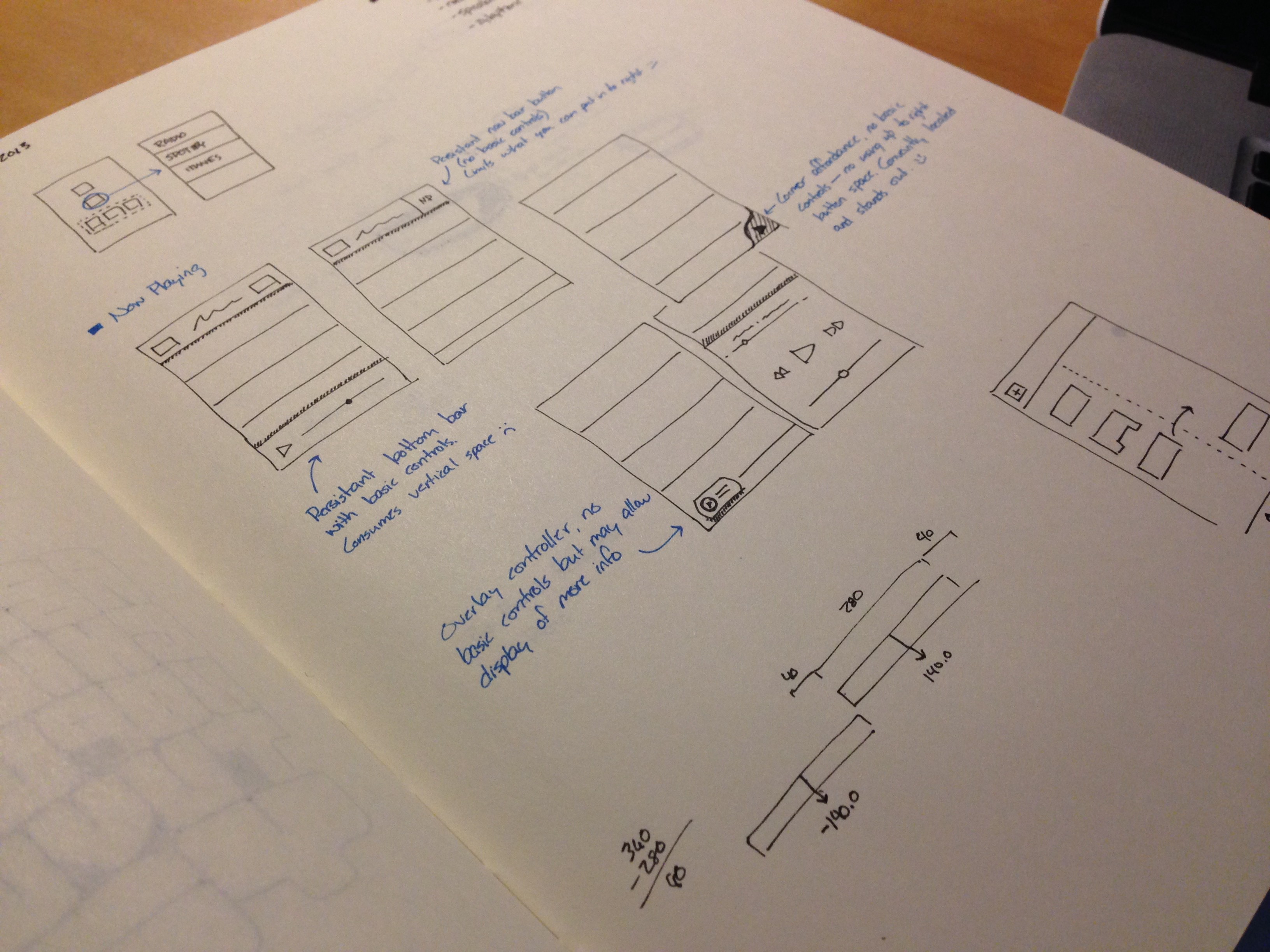
I went through a bunch of iterations, mostly because it was fun. iOS 7 shipped in the middle of it all which forced me to simplify things and learn a new emerging visual language.
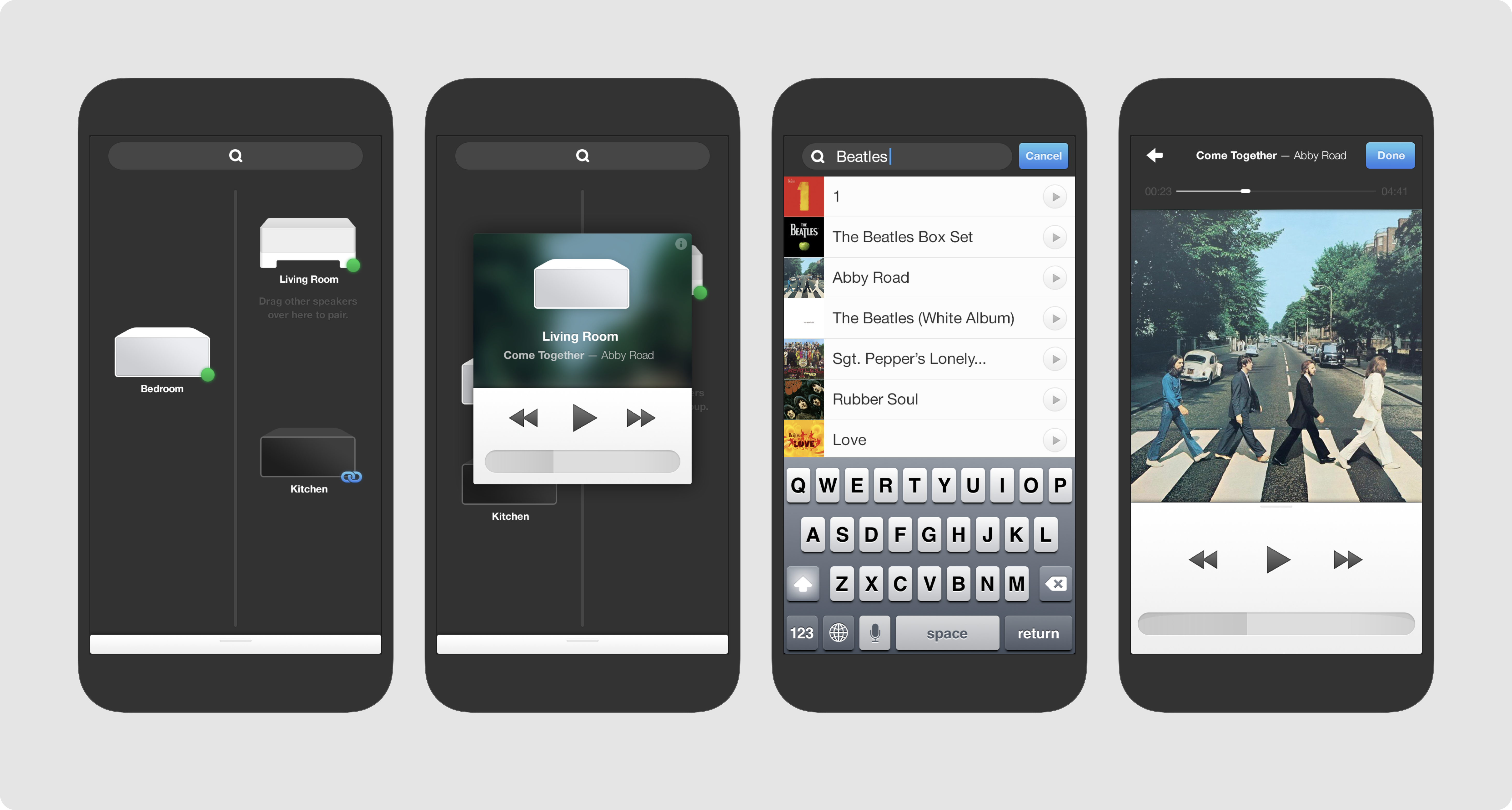
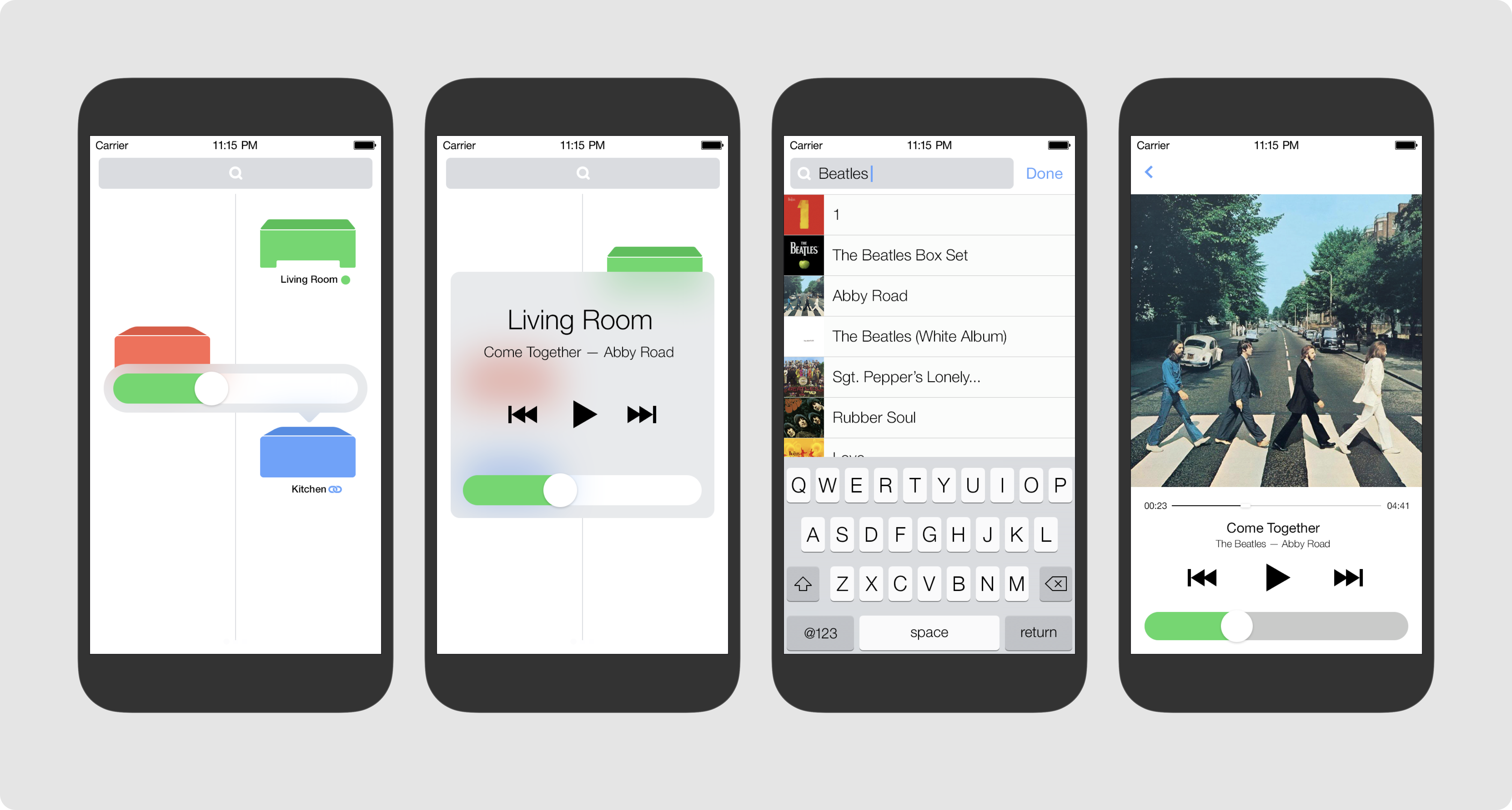
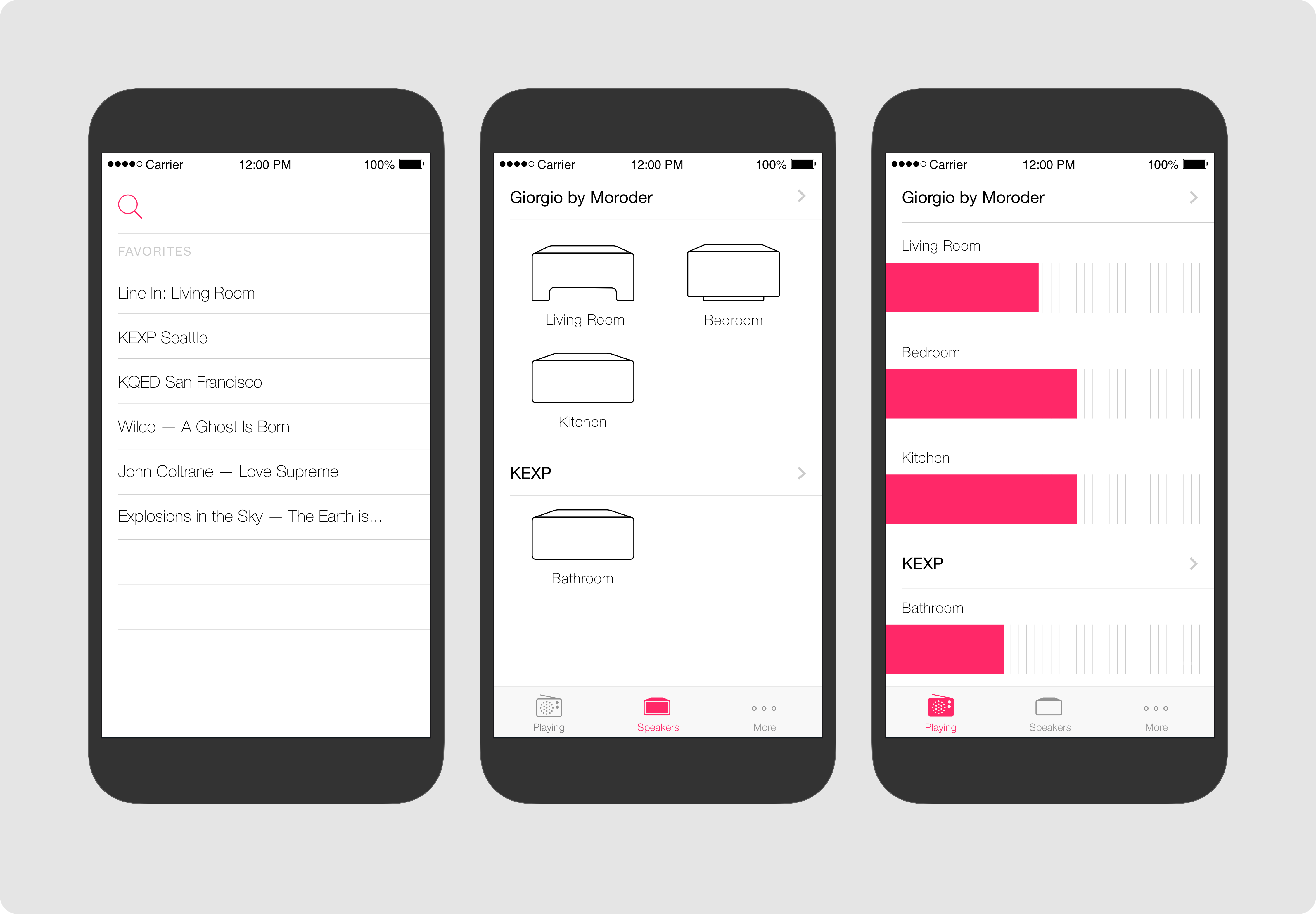
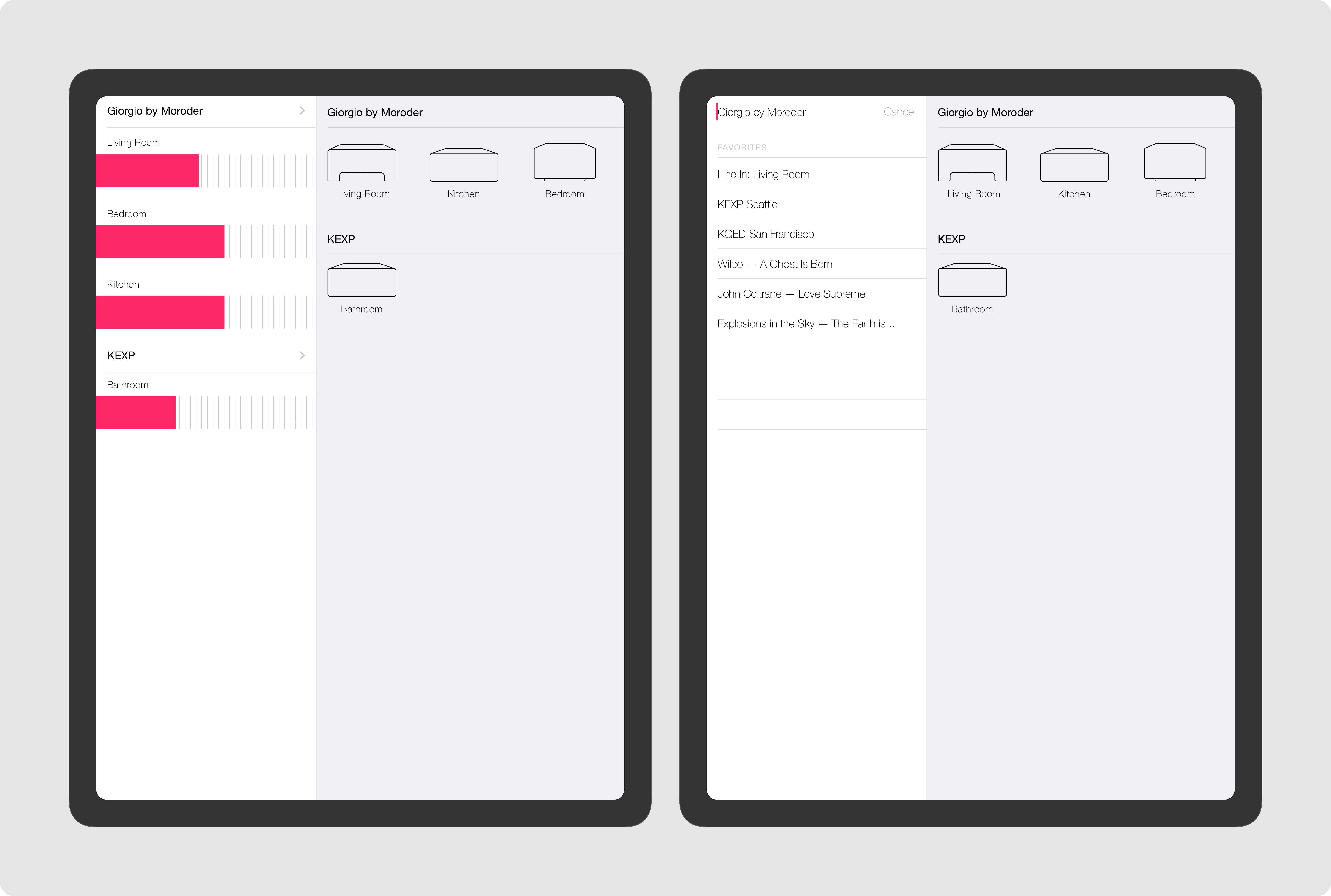
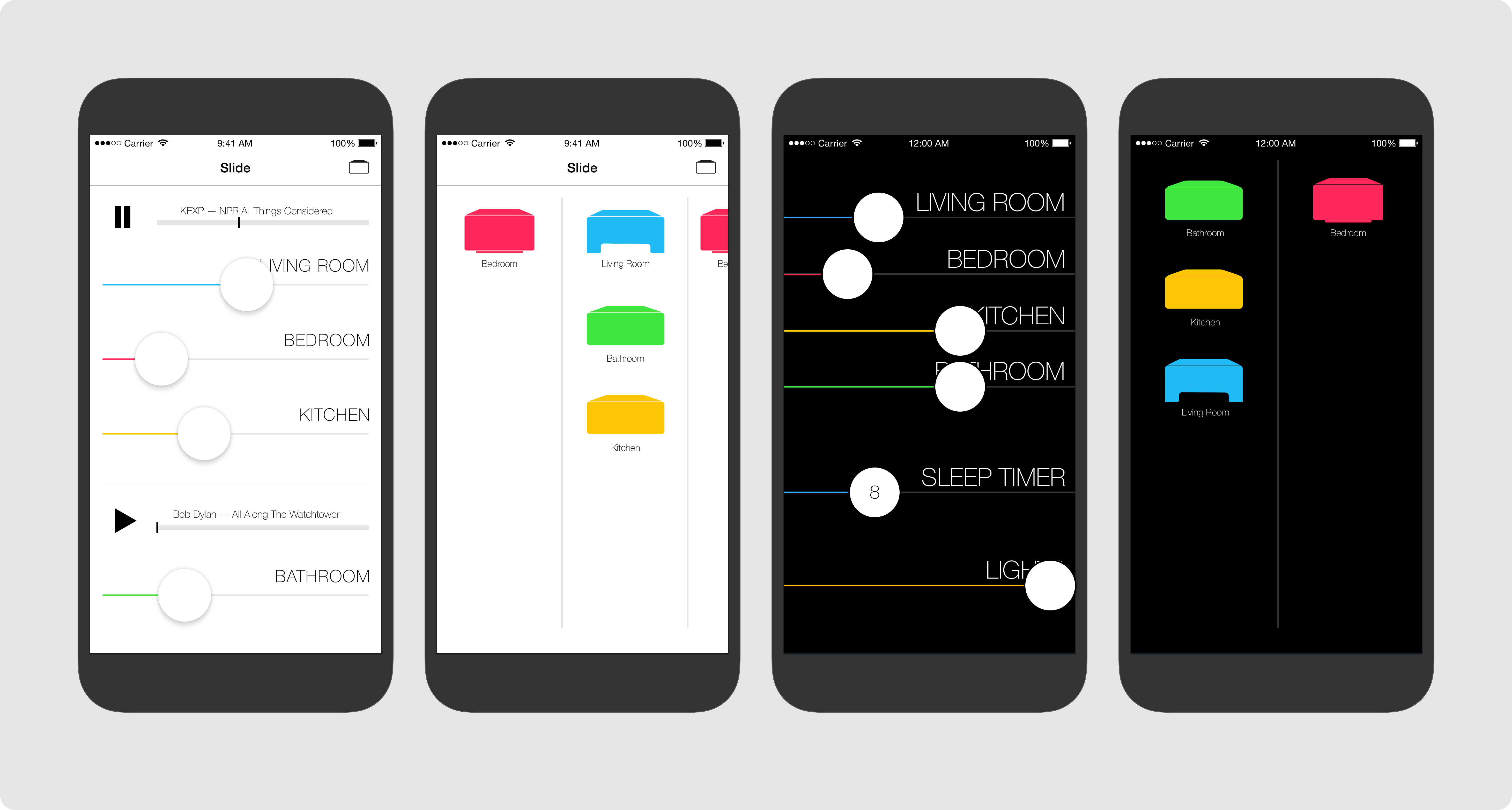
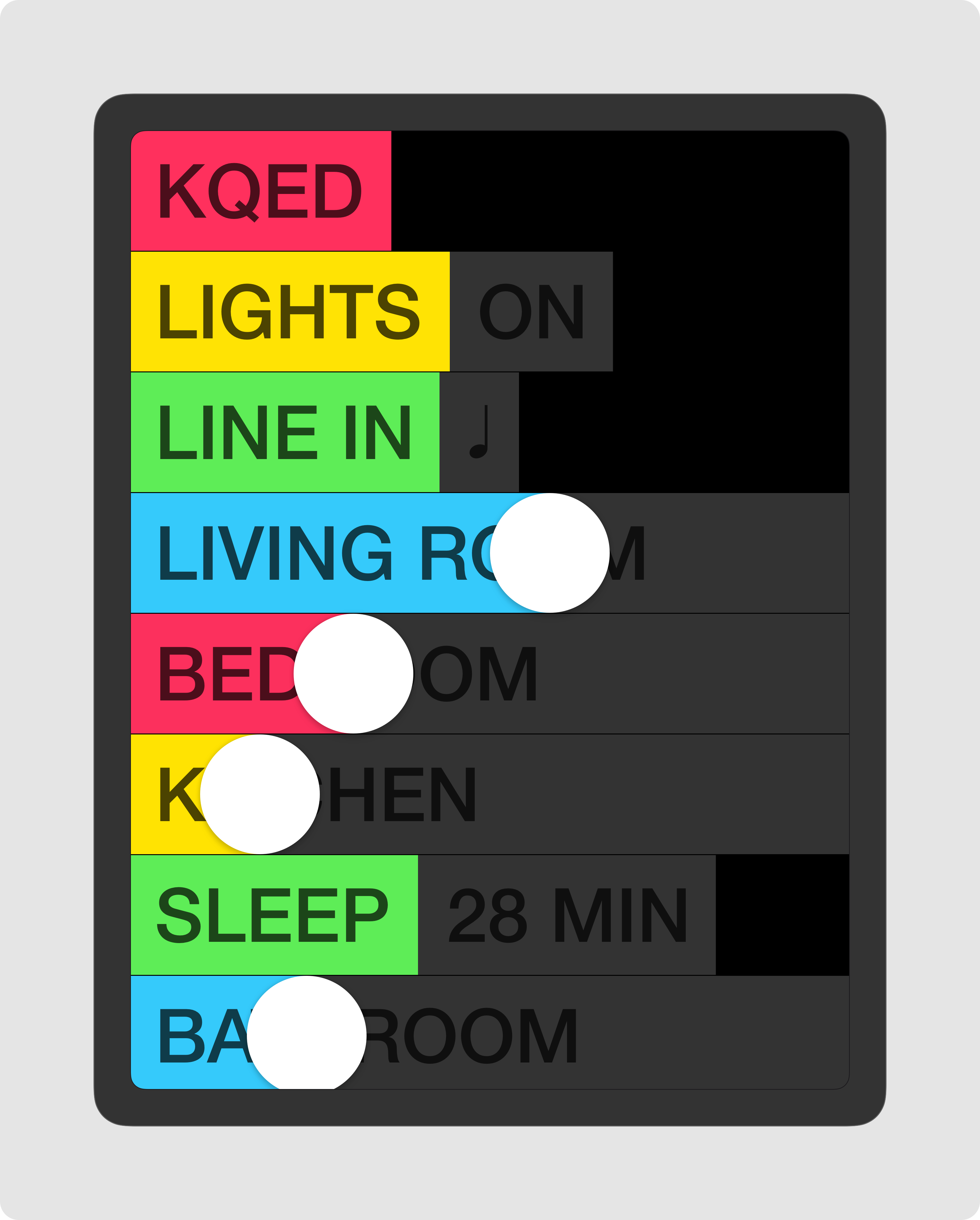
Each mocked version above was built to some degree. You can see all the iterations on Github. A lot of this is still in development and I’ll try to push improvements when they’re ready.
What about desktop?
Then I realized I wanted more than just an app on my phone, sometimes I’d be on my laptop and want to quickly adjust volume. So I decided to build a menu bar app. Volume is all I really needed here so I didn’t implement anything else.
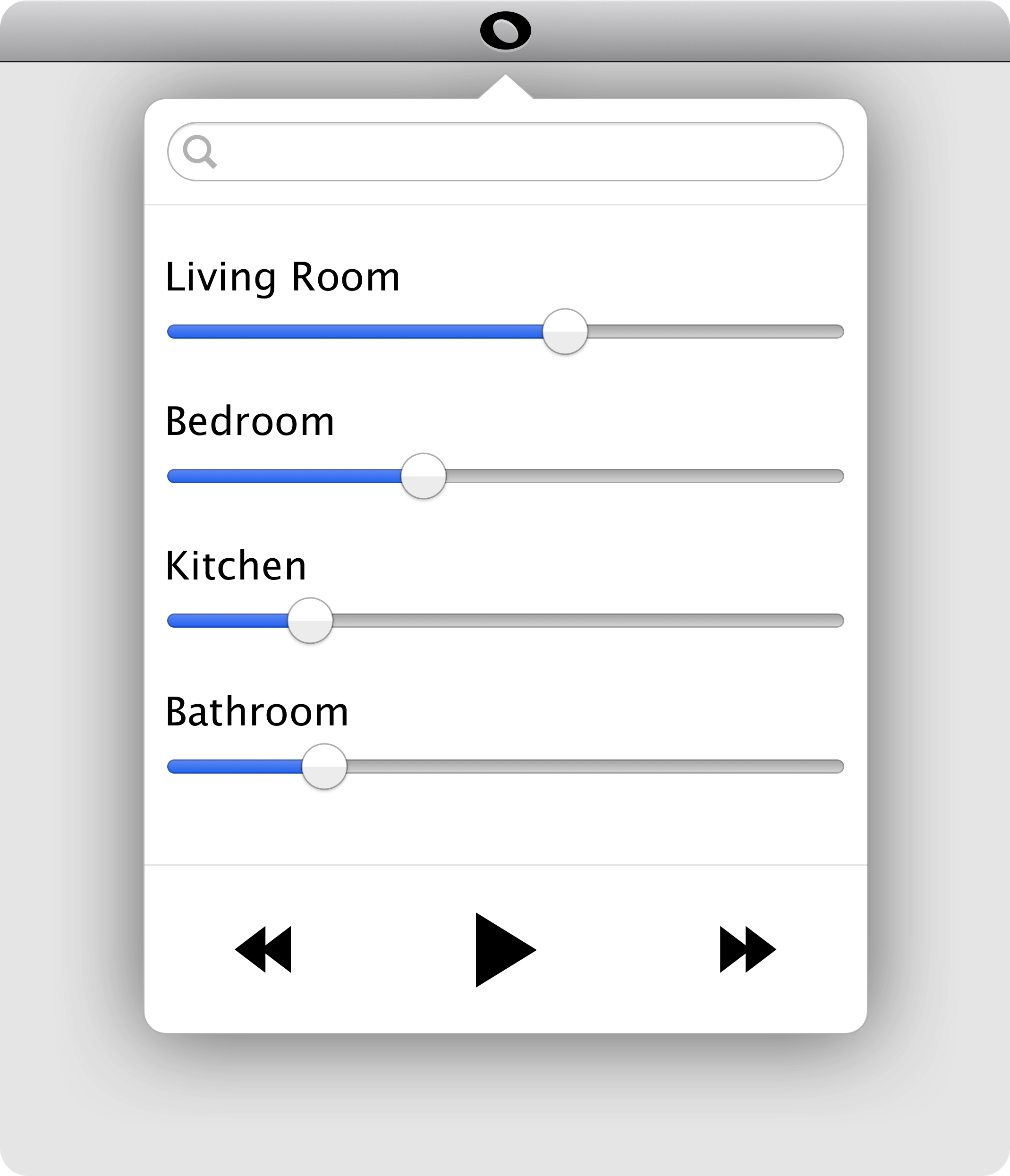
This was a lot easier once I abstracted out all the bits needed to control Sonos into a little library called SonosKit.
Can it be smarter?
The above was all nice but I began to notice another annoyance—I didn’t like having to turn my speakers off when I left my apartment. I had already figured out how to turn all my lights off with IFTTT so why not make this work with Sonos. Using a Raspberry Pi and a Sonos command-line interface I hooked up a very basic home REST API where I could detect my phone leaving a location using a geofence.
Now when I leave it makes a request to my home and the music turns off.
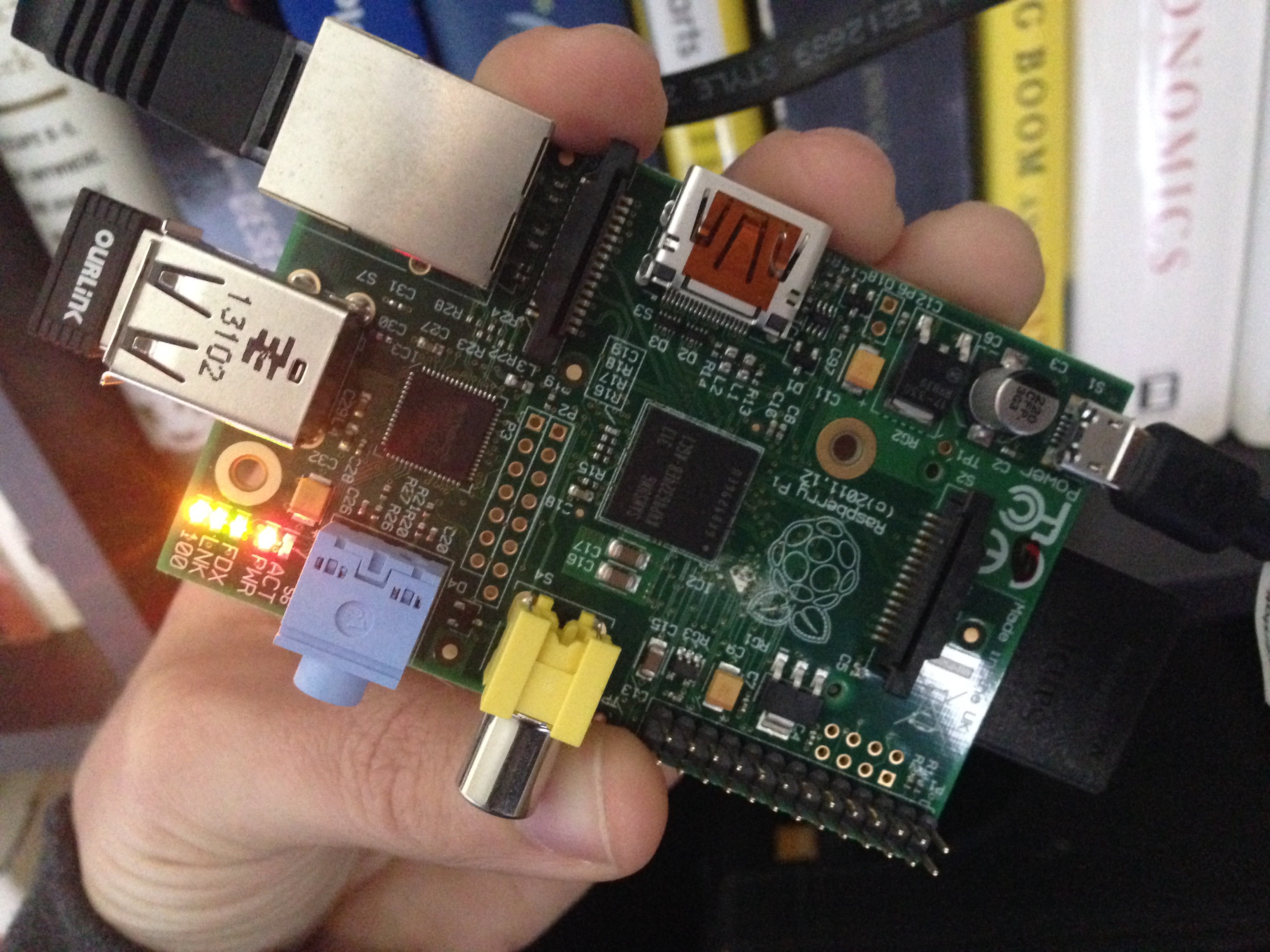
Next up
The next thing I’m working on (aside from finishing some of the above stuff) is a way to determine an optimal state without having to interact with anything. By learning more about my listening habits I could automatically start playing one of three podcasts before going to bed or automatically start playing jazz on the weekends. All things I manually do on a pretty regular basis. Then I’m curious if I can use music to effect my mood—after a stressful day (i.e. lots of meetings on my calendar) I could let Sonos know and maybe start playing some chill music when I walk into my apartment.